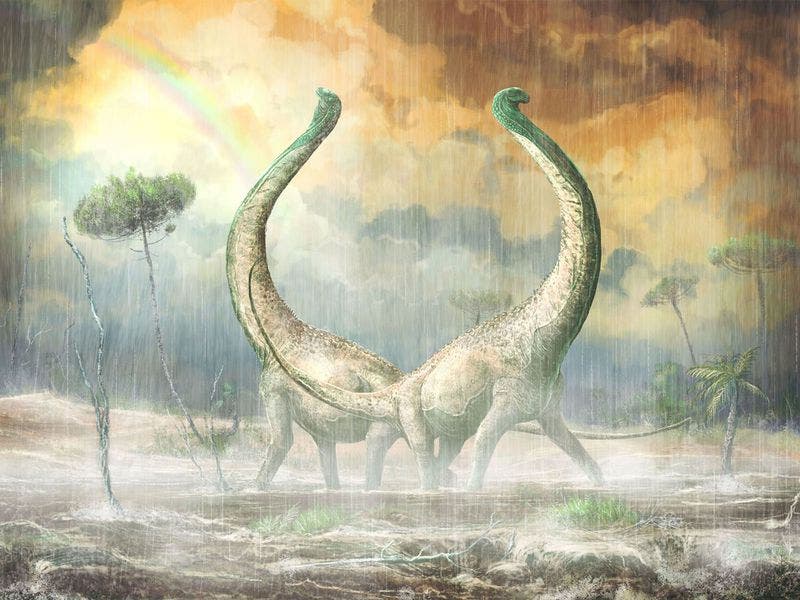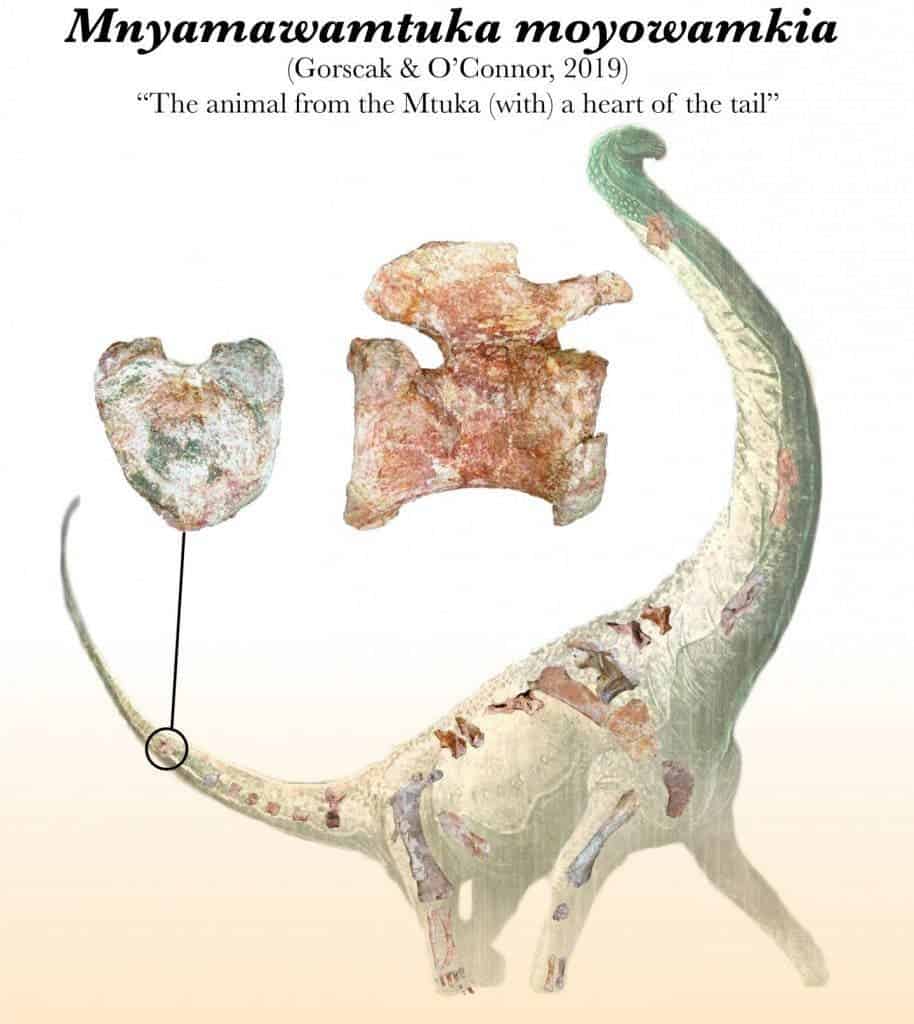
Scientists have announced the discovery of a new long-necked dinosaur species whose tail bones are heart-shaped. Besides being cute, the discovery might help shed more light on the broader family of titanosaurs of which the new species belongs to.
The dinosaur was first excavated from the Mtuka riverbed in Tanzania. In honor of its place of origin and Tanzanian culture, paleontologists named the newly discovered species Mnyamawamtuka moyowamkia, which is Swahili for “animal of the Mtuka with a heart-shaped tail.”

The first fossils were excavated back in 2004 in a cliff wall, but it took many years of painstaking work before paleontologists could extract the bones from the rocks and compare them to other species.
In the end, all that effort paid off as the researchers had found a nearly complete 100-million-year-old skeleton of a new species, belonging to a group of dinosaurs known as the largest to ever walk the Earth. Titanosaurs could grow to be 120 feet long and weighed as much as nearly one dozen Asian elephants. Some famous members include Argentinosaurus, Puertasaurus, and Notocolossus.
Most titanosaurs were discovered in South America, which is why it’s so exciting to find one in Africa. Scientists hope that Mnyamawamtuka might help paint a broader picture of its family tree.
Researchers aren’t sure what function the heart-shaped bones might have had for Mnyamawamtuka, but two other titanosaurs have similar features, so it’s not an accidental or irrelevant development. In the future, researchers hope to use this feature to classify how various members of the huge family relate to each other, piecing together their evolution.
“A large chunk of what we know about the evolutionary history of titanosaurs comes from the many species known from South America. But during the early half of the Cretaceous, Africa and South America were still connected before they eventually split up around the halfway point of the Cretaceous,” Eric Gorscak from Midwestern University told Gizmodo. “What we’re seeing with recent discoveries from Africa, such as Rukwatitan, Mansourasaurus, Shingopana, and now Mnyamawamtuka, is that titanosaurs were likely to be as diverse as their South American counterparts and there may have been a coarse division between the northern and southern half of Africa.”
The findings appeared in the journal PLOS One.






